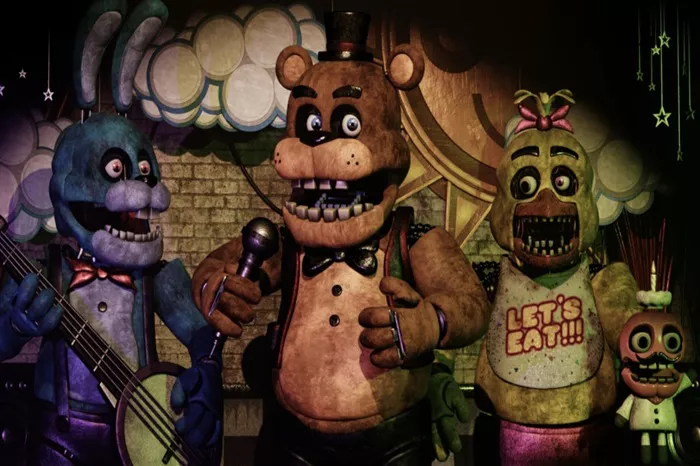Since its inception in 2014, Five Nights At Freddy’s (FNAF) has captivated gamers worldwide with its unique blend of horror and suspense. At the heart of the franchise are its eerie animatronic characters, which come to life at night to terrorize players. While the game is undeniably fictional, its portrayal of lifelike animatronics raises an intriguing question: are FNAF animatronics real?
The Inspiration Behind FNAF Animatronics
To understand the origins of FNAF animatronics, we must first delve into the inspiration behind these haunting characters. Creator Scott Cawthon drew upon his own experiences with animatronic mascots at theme parks and family entertainment centers. These larger-than-life figures, designed to entertain children during the day, sparked Cawthon’s imagination about what might happen after hours when the lights dimmed and the crowds dispersed.
Cawthon’s vision gave birth to iconic characters like Freddy Fazbear, Bonnie the Bunny, Chica the Chicken, and Foxy the Pirate Fox. Each animatronic boasts a distinct personality and appearance, adding depth to the game’s lore and gameplay mechanics. But while FNAF animatronics are fictional constructs, they bear striking similarities to real-life counterparts.
Real-World Animatronics: From Entertainment to Industry
Animatronics, a portmanteau of “animated” and “electronics,” have a rich history dating back to the mid-20th century. Early pioneers like Walt Disney revolutionized the entertainment industry with their lifelike animatronic figures, which brought beloved characters to life in theme park attractions such as Disneyland’s Pirates of the Caribbean and The Haunted Mansion.
Over the decades, animatronics have evolved from novelty attractions to indispensable tools in various industries. Today, they are commonly used in film and television production, advertising, museums, and even healthcare. Advanced robotics technologies have enabled the creation of animatronic figures that blur the line between fiction and reality.
The Anatomy of FNAF Animatronics
One of the most intriguing aspects of FNAF animatronics is their design and construction. While fictional, these characters exhibit characteristics reminiscent of real-world animatronics. From their articulated limbs and facial features to their integrated sound and lighting systems, FNAF animatronics mirror the complexity of their real-life counterparts.
The animatronic technology showcased in FNAF draws inspiration from cutting-edge robotics research and development. While the game takes creative liberties with its portrayal of these characters, the underlying principles of animatronic design and operation remain grounded in reality. This attention to detail contributes to the immersive experience that has made FNAF a cult classic among gamers.
See also: Five Nights at Freddy’s Marks Decade with Retro Shift in New Game Release
Challenges in Bringing Animatronics to Life
Despite their fictional nature, FNAF animatronics pose unique challenges for game developers and robotics engineers alike. Balancing realism with gameplay mechanics requires careful consideration of factors such as movement, behavior, and interaction with the player. Moreover, maintaining the element of horror while adhering to technical constraints adds an additional layer of complexity to animatronic design.
In the real world, animatronics face similar challenges when deployed in entertainment venues and other settings. Engineers must address issues related to reliability, safety, and maintenance to ensure smooth operation and prevent accidents. Moreover, advances in artificial intelligence and sensor technology have opened new possibilities for creating interactive and responsive animatronic characters.
The Future of Animatronics
As technology continues to advance, the line between fiction and reality becomes increasingly blurred. While FNAF animatronics may remain confined to the realm of gaming, real-world applications of animatronic technology continue to expand. From theme park attractions and immersive experiences to educational tools and therapeutic companions, animatronics have the potential to revolutionize various aspects of our lives.
Looking ahead, we can expect to see further advancements in animatronic design, driven by innovations in robotics, artificial intelligence, and materials science. These developments will not only enhance entertainment experiences but also unlock new opportunities for education, healthcare, and beyond. Whether in the form of friendly mascots or terrifying adversaries, animatronics will continue to captivate our imagination for years to come.
Conclusion
While Five Nights At Freddy’s may be a work of fiction, its animatronic characters offer a glimpse into the possibilities of advanced robotics and artificial intelligence. Drawing inspiration from real-world animatronics, FNAF creates a chillingly realistic portrayal of these mechanical marvels. As technology progresses, the line between fiction and reality becomes increasingly blurred, raising tantalizing questions about the future of animatronics and their impact on society. Whether they’re entertaining audiences in theme parks or haunting players in video games, animatronics remind us of the power of imagination and innovation to bring the impossible to life.
Related topics:
Five Nights at Freddy’s 2: Return to the Pizzeria Set for Fall 2025 Release
Five Nights at Freddy’s Mid-Credits Scene: A Playful Twist and Creative Surprises
Five Nights at Freddy’s: Designer Addresses Animatronic Backlash and the Red-Eye Debate

